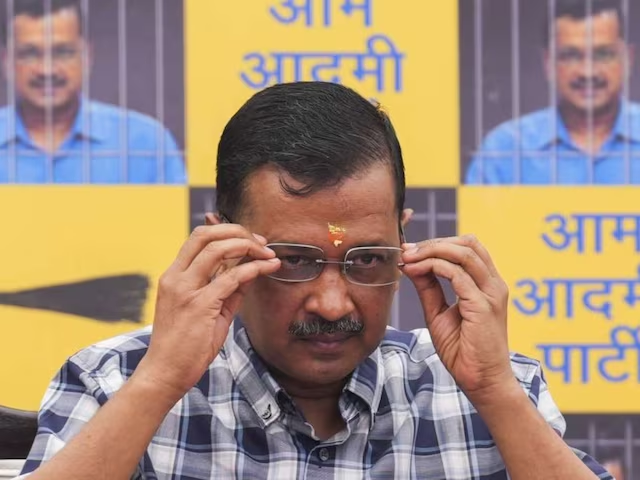The recent assembly elections in Haryana have unveiled the stark reality of the Aam Aadmi Party’s (AAP) political ambitions in the state. Despite its efforts to position itself as a viable alternative to the ruling Bharatiya Janata Party (BJP) and a struggling Congress, AAP garnered a mere 1.53% of the total votes, marking a significant setback for the party that has found some success in Delhi and Punjab. This article explores the factors contributing to AAP’s dismal performance in Haryana and highlights the broader implications for the party’s future in Indian politics.
Historical Context and Ambitions
Since its inception in 2012, AAP has aimed to reshape the political landscape of India by focusing on governance issues, transparency, and accountability. The party initially made headlines with its dramatic rise in Delhi, where it secured a majority in the 2013 assembly elections. However, AAP’s attempts to penetrate Haryana’s political fabric have been fraught with challenges. Despite its ambitions, AAP has consistently failed to open its account in Haryana since its electoral debut in 2014.
In the 2024 elections, AAP contested 89 of Haryana’s 90 seats after failing to forge an alliance with Congress, a decision that proved pivotal in limiting its electoral viability. The absence of a united front against the BJP may have diluted AAP’s appeal among the electorate, particularly given the party’s historical struggles in the region.
Late Campaign Push
One of the most significant missteps for AAP was the timing of its campaign. Although Arvind Kejriwal, the party’s national convenor and Delhi Chief Minister, attempted to position himself as a “son of the soil” through various campaign initiatives, his late arrival in the campaign cycle proved detrimental. Kejriwal was released on bail in a high-profile Delhi liquor policy case only a few weeks before the elections, which left little time for him to effectively engage with voters.His first roadshow in Haryana occurred less than three weeks before the polls, a timeframe that was insufficient for substantial voter mobilization.
Voter engagement is crucial in state elections, particularly in Haryana, where traditional party loyalties run deep. AAP’s failure to connect with voters early on resulted in missed opportunities to present its agenda and policies in a meaningful way.
Disconnect with Voter Sentiment
Another critical factor contributing to AAP’s electoral failure was its inability to resonate with the local electorate. Haryana voters often prioritize regional issues, including agricultural distress, unemployment, and local infrastructure development. AAP’s campaign messages, while focused on governance and anti-corruption, may not have effectively addressed these pressing concerns. The party’s emphasis on its achievements in Delhi and Punjab did not translate into voter appeal in Haryana, where residents are looking for immediate and practical solutions to their daily challenges.
Furthermore, AAP’s messaging may have been perceived as overly ambitious or disconnected from the ground realities in Haryana. Many voters likely questioned whether AAP could effectively govern in a state where it had no prior experience or established support base.
The Specter of the BJP
The BJP’s stronghold in Haryana presents an additional challenge for AAP. Despite facing criticism and setbacks, the BJP has maintained a significant presence in the state, leveraging its organizational strength and deep-rooted political networks. The party’s ability to connect with various demographic groups, including farmers, women, and youth, has allowed it to build a solid electoral base. AAP’s limited outreach and the lack of a coherent strategy to counter the BJP’s influence contributed to its electoral downfall.
Moreover, the BJP capitalized on the political narrative surrounding national security and development, themes that resonate deeply with Haryana’s electorate. AAP’s focus on governance may have been overshadowed by the BJP’s ability to project itself as a stable and strong political force, particularly in a region marked by socio-economic challenges.
Internal Discontent and Criticism
Within its ranks, AAP faced criticism for its strategy and decision-making. Some party leaders openly questioned the effectiveness of the alliance with Congress, suggesting that AAP’s participation diluted the opposition vote rather than consolidating it against the BJP. This discontent reflected broader anxieties about the party’s direction and ability to carve out a meaningful role in Haryana politics(.
The disillusionment among party members may hinder AAP’s ability to regroup and reassess its strategies moving forward. Addressing internal conflicts and aligning on a cohesive vision will be essential for the party if it hopes to mount a credible challenge in future elections.
Conclusion
The AAP’s recent performance in Haryana serves as a cautionary tale about the complexities of regional politics in India. Despite its claims of governance and a strong campaign effort led by Arvind Kejriwal, the party’s failure to resonate with voters highlights the challenges of expanding its influence beyond Delhi and Punjab. The combination of a late campaign push, disconnect with local sentiments, the formidable presence of the BJP, and internal dissent have all contributed to AAP’s electoral woes in Haryana.
As AAP reflects on this setback, it must reconsider its strategies and approaches to connect with diverse voter bases if it hopes to regain traction in future elections. The journey ahead is crucial for AAP’s political survival and the broader landscape of opposition politics in India.





